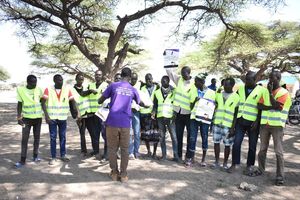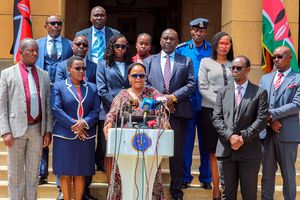Intimate partner violence

Intimate partner violence is a major cause of maternal and foetal morbidity and mortality.
What you need to know:
- Intimate partner violence is a major cause of maternal and foetal morbidity and mortality. This is because trauma and injuries caused to the mother not only obviously harm the mother but the foetus too.
- For the unborn baby, a hit to the pregnant mother’s belly can cause the placenta to separate from the womb and result in loss of the baby. The mother can also have massive internal bleeding that may not be apparent.
Maria, 24, had been my patient for several years. I was there when she lost her first pregnancy. Unfortunately, it was a stillbirth with birth defects. I was there for her second pregnancy, a healthy baby boy. From the get go, her ever supportive husband, Dan, was always by her side. Every appointment, every procedure, like her shadow, he was present. It was a rare show of love and devotion.
Not to say men who do not accompany their pregnant wives to their clinics are lacking, not at all. Dan simply did not fit the mold of most other partners I had witnessed in the clinic. He was what society would deem as the ideal partner. He seemed to have no flaw. He was charming, sociable, funny and loving. A sharp dresser, a man on the move. The sun would rise and never set in Maria’s eyes. She was supremely content.
Overtime, however, when their son was three months old, Maria started to miss appointments and when she did attend clinic, she avoided me. She preferred to be seen by the nurse. This is not particularly alarming because there are many innocuous reasons for this. Still, Dan was with them. For me it was not their norm, something felt off but I had no proof. The nurse did inform me that the baby was thriving, he was hitting all milestones as expected. All was well. That was until one appointment when Maria turned up with the baby, no Dan. What she told me next did not come as a total surprise.
Dan was physically and verbally abusing her. He had been doing it for quite some time. I had suspected something was wrong, but one cannot force a confession unless freely given. Dan was the quintessential manipulative narcissist. Among other personality traits, these people are entitled, arrogant, lack empathy, need attention and must be admired, they frequently demean, intimidate, bully or belittle others and exploit them for their own gain without shame or guilt.
Maria was living in hell. She shared how Dan would scream at her for what seemed like hours on end for no reason at all. He would constantly tell her how she was not a fit mother, how she was responsible for their firstborn’s demise, how she would never find anyone who can love her like he can.
Maria could not do anything right. She was not allowed to go anywhere without him, she could not see her family or friends without his permission. She was under house arrest.
What made it worse was that being a housewife she solely depended on him for everything. The one time Maria reached out to her mother for help, she was told to give him time. When Dan learned that Maria had sought help from her mother, the violence escalated.
He always hit her below the neck, not the arms or legs where the scars would be visible. Dan threatened to take the baby away from her. As happens with most battered women, to save her family, to keep her son safe, she stayed put. She sacrificed herself for their sake.
Looking at Maria, unless one knew her well, one would never suspect she was an abused woman. She appeared quiet and calm. Inside was the rumbling of a volcano about to snap. I asked how she managed to come to the clinic. She explained Dan had been called to his place of work unexpectedly to fill a shift. She ran. The only safe place she knew was the clinic. She had been so isolated from friends she had nowhere else to go.
Gender based violence has been recognised worldwide as a violation of basic human rights. According to KDHS 2022, 34 per cent of women and 27 per cent of men in Kenya have experienced physical violence since the age of 15.
The most commonly reported perpetrator of physical violence among women who have ever been married or ever had an intimate partner was their current husband or intimate partner (54 per cent), followed by a former husband/intimate partner (34 per cent). Thirteen per cent of women and seven per cent of men reported that they had experienced sexual violence at some point in their lives, the most common perpetrators of the sexual violence being current husbands or intimate partners (71 per cent) for women and current wives and intimate partners (63 per cent) for men.
Intimate partner violence is a major cause of maternal and foetal morbidity and mortality. This is because trauma and injuries caused to the mother not only obviously harm the mother but the foetus too. For the unborn baby, a hit to the pregnant mother’s belly can cause the placenta to separate from the womb and result in loss of the baby. The mother can also have massive internal bleeding that may not be apparent.
All women suspected of intimate partner violence should be screened. Some indicators that may cause one to suspect a woman is being abused would be noticing injuries that are inconsistent with the story she gives, frequent hospital visits, self-blame for injuries, self-abuse, a diminished self-image, depression, suicide attempts or their partner insists on being present at all times around the patient and they attempt to control all the discussions. Once identified, they should be counselled and referred to appropriate counsellors and offered safety/ shelter homes or gender-based violence recovery centres.
Dr Bosire is an obstetrician/ gynaecologist




